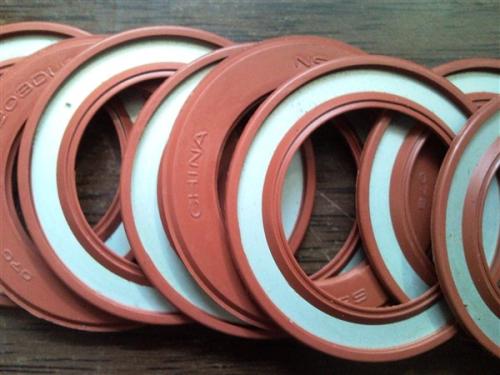Bearing seal material
Nitrile rubber:
Nitrile rubber is a universal sealing material. It is a rubber synthesized from acrylonitrile and butadiene, and has good resistance to the following media.
Most mineral oil and grease based on mineral oil
General fuels, such as gasoline, diesel and light civil fuel
Animal oil, vegetable oil
NBR seals also allow the bearing to run for a short time without oil. The allowable operating temperature range is -40 to 100°C. It can withstand temperatures up to 120°C in a short time. But it is not advisable to operate at higher temperatures because the nitrile rubber will harden.
Hydrogenated Nitrile Rubber
Hydrogenated nitrile rubber has more wear-resistant properties than nitrile rubber, so seals made of this material have a longer working life. In addition, hydrogenated nitrile rubber has stronger resistance to heat, aging and hardening in hot oil or ozone. The maximum allowable working temperature of hydrogenated nitrile rubber is 150°C, which is much higher than that of nitrile rubber.
fluororubber
The main characteristics of fluorine rubber are high temperature resistance and chemical corrosion resistance, and it has good anti-aging and ozone resistance, and its air permeability is also very low. Even under very harsh working conditions, fluorine rubber still has excellent wear resistance. It can withstand a working temperature of 200°C or below. The seal made of this material allows the bearing to run for a short time without oil.
Fluorine rubber also has excellent resistance to various media including oil and hydraulic oil, fuel oil, lubricants, inorganic acids, aliphatic hydrocarbons and aromatic hydrocarbons. In the case of compounds such as esters, ethers, ketones, certain amines and high-temperature anhydrous hydrogen fluoride, fluorine rubber should not be used. If the seals made of fluorine rubber are exposed to open flames or high temperatures above 300°C, they will endanger health and the environment! Even after cooling, they are dangerous.
The seal is very important for the cleaning of the lubricant and the service life of the bearing.
The role of the seal is to prevent the loss of lubricant and prevent contaminants from entering the space that needs to be protected.
The seal has the following characteristics:
has sufficient deformation capacity to compensate for irregular surfaces
has enough strength to withstand the pressure at work
Able to withstand a large operating temperature range
Chemical resistance
Minimum friction, frictional heat and wear during operation
What material is the bearing seal
Bearings with dust caps or seals on both sides are filled with grease and generally do not require maintenance.
Bearings with dust cover are suitable for applications under dry conditions and relatively clean working conditions. The dust cover is also suitable for applications that require low friction, such as high speed or high temperature.
The dust cover is generally made of metal.
Bearings with contact seals are suitable for applications with general pollution, moisture or humidity, or working conditions that require a long service life and long-term maintenance-free. The seal is generally made of rubber.







